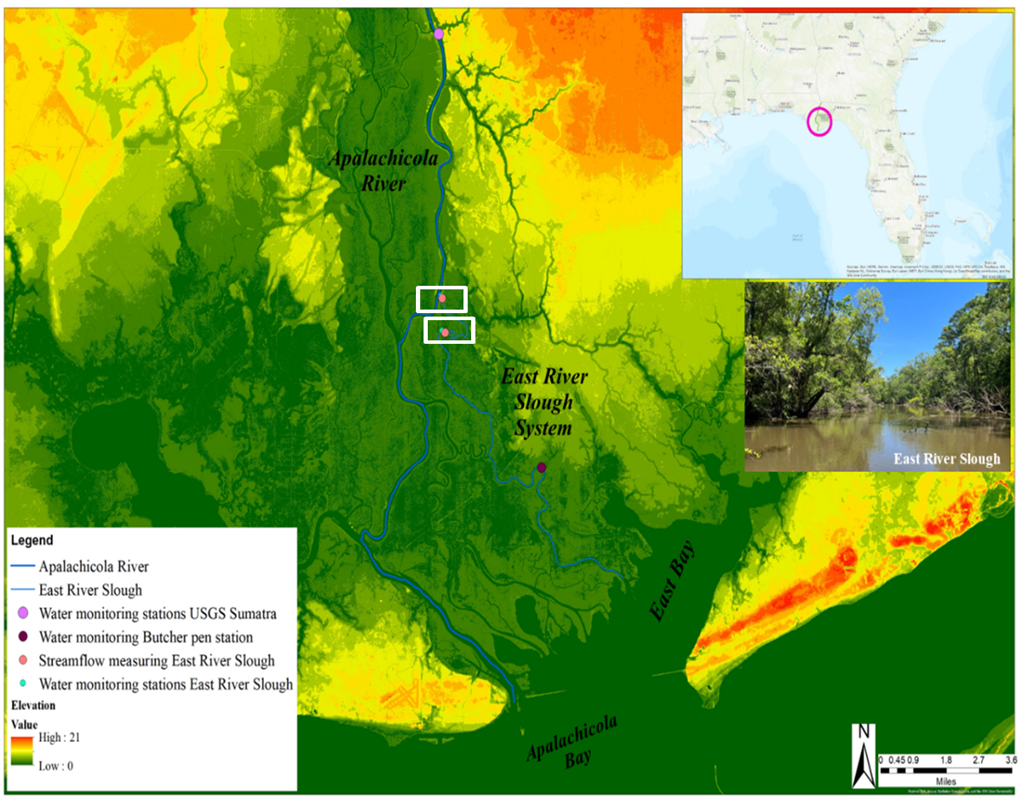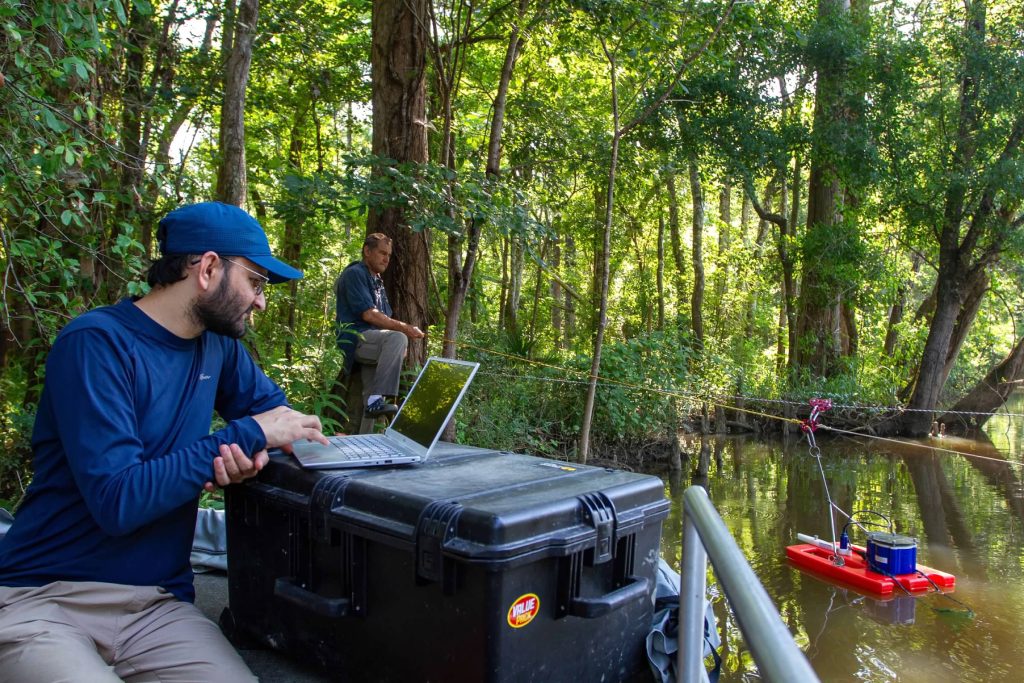Love Kumar is one of the researchers involved in Apalachicola Riverkeeper’s Slough Restoration Project. Love is an Environmental Engineer with a Masters in Environmental Engineering & Management. He is currently studying the hydrology and chemistry of sloughs along the Lower Apalachicola River in pursuit of his Ph.D. at the University of Florida. Love has been involved from the start of the Slough Restoration Project and has been diligently collecting data for the past three years that will better inform restoration projects and water resource management. Below is an overview of Love’s research in the Apalachicola River system.
Status of Water Quality data collection: After three years of data collection, we have removed the water quality loggers from six locations (Upper Spider Cut Slough, Lower Spider Cut Slough, Upper Douglas Slough, Lower Douglas Slough, Upper East River, and Lower East River; four of these were located in the white boxes on our map). This data collection is important for understanding how characteristics like pH, dissolved oxygen, and water temperature in sloughs change from season to season and through the dry summer months. Currently, we are analyzing collected data with a focus on contrasting conditions of low and high flows, which will help us understand how water quality parameters fluctuate under different flow conditions, providing an understanding that is essential for effective water management.


Nutrient Loading Calculation in Slough Systems: Another aspect of our research involves calculating nutrient loading in all three slough systems. By measuring concentrations of dissolved materials like nitrogen and carbon, we can estimate the total amount of these nutrients moving through our project sloughs toward the bay.

Hydrodynamic Modeling for Spider Cut Slough: We are advancing in our efforts to predict how flows will change following the restoration of Spider Cut Slough. We are using our streamflow data collected at our two slough monitoring stations along with the proposed stream channel design in a hydrodynamic model to predict how much more water will move through Spider Cut Slough after potential restoration efforts. It is a critical component of our project, as it will illustrate the changes in streamflow we might expect after restoration is complete.
Floodplain water depth and water quality monitoring: We have been measuring the water elevation and nutrient concentrations in shallow groundwater at several points in the floodplain so we can quantify the movement of nitrogen and carbon from shallow groundwater to sloughs. This can also help us to understand how restoring Spider Cut Slough will influence the movement of these nutrients from the floodplain during low flows.
